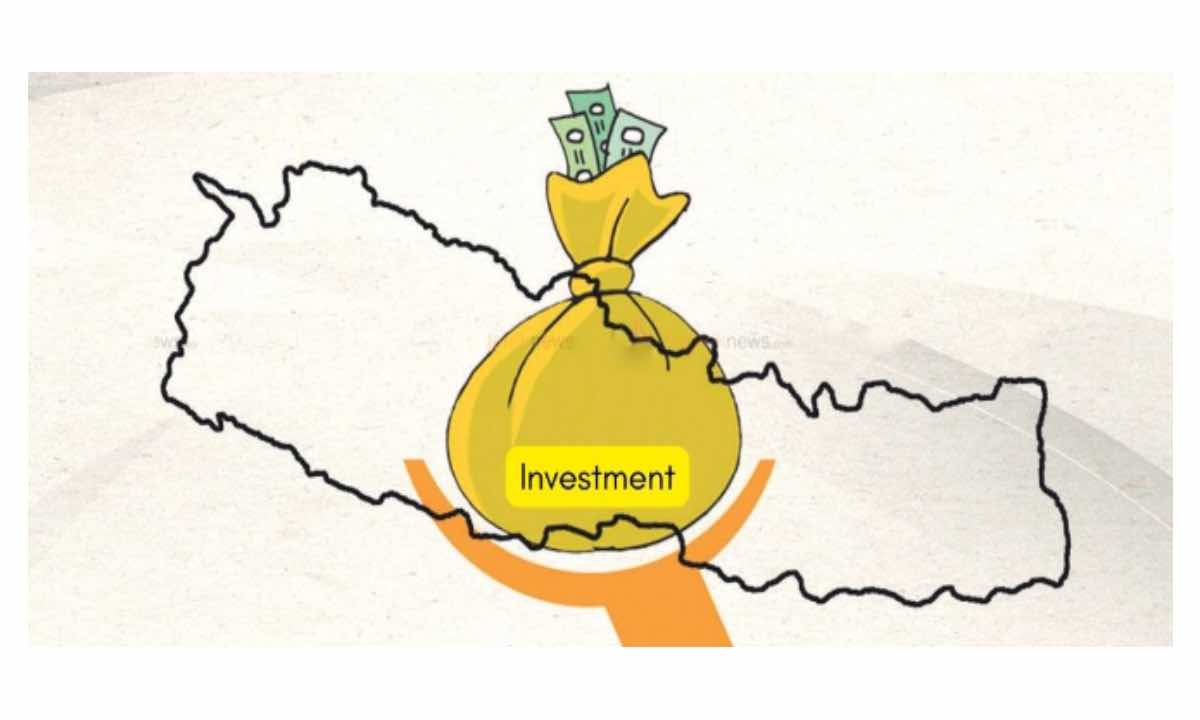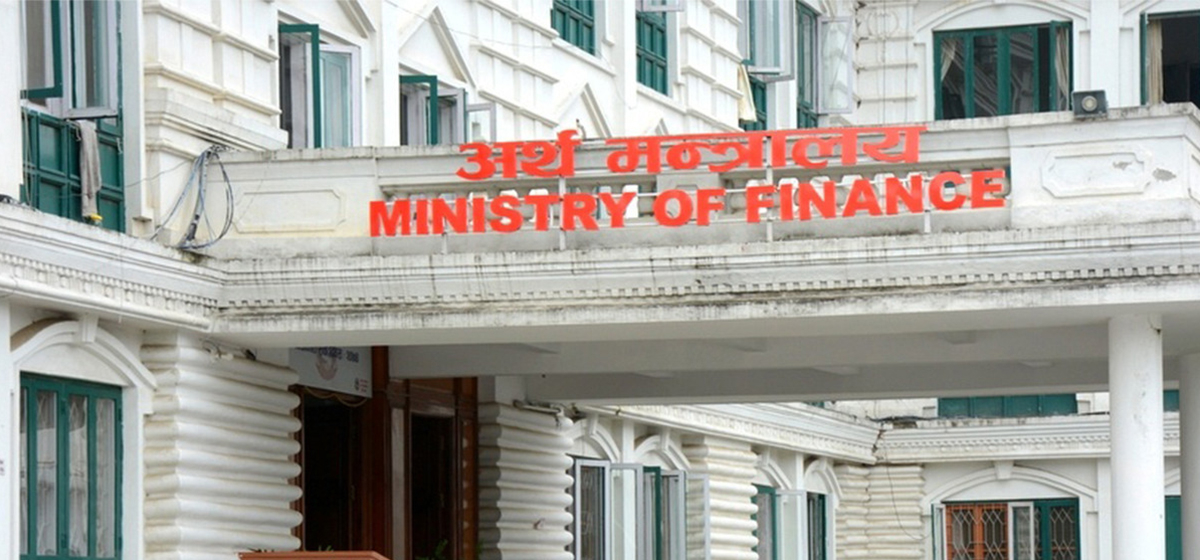
OR
Opinion
Urbanization, Investments and Economy
Published On: November 26, 2023 09:00 AM NPT By: Ashesh Shrestha

Ashesh Shrestha
The author is a researcher at Samriddhi Foundation, an economic policy think tank based in Kathmandu. The views expressed in this article are the author’s own and do not represent the views of the organization.ashesh@samriddhi.org
More from Author
Research shows there exists a symbiotic relationship between urbanization and economy
According to world bank data, the world’s urban population has grown from 34% in 1960 to 57% in 2022. At the same time, per capita income has grown from USD 456 to USD 12,647. However, the economic performance of South Asia has been below par in comparison to average global economic performance.
Cities are considered major drivers of economic growth and development. A forecast by Oxford Economics shows that in 2035 top 10 major cities of the world would contribute 13.5 trillion dollars to the world output, which is approximately 11 percent of the world output. The correlation between urbanization and GDP per capita has been estimated to be as high as 0.85 which substantiates the argument for inherence of urbanization for achieving economic prosperity. Nonetheless, the relationship between urbanization and economic growth goes both ways and research shows there exists a symbiotic relationship between urbanization and economy. Economic development involves transformation of a country from a rural agro-based economy to an industrial-service based economy. This transformation involves urbanization as firms and labor cluster around cities to take advantage of opportunities brought about by growth of the manufacturing and service sector. With urbanization and formation of markets, more investments are attracted which again contributes to the economy. However, in order to attract such investments, urbanization has to be supported by both hard and soft infrastructure. To put it simply, we need investments on physical infrastructure, governance systems and an environment conducive of doing business.
The world has seen linear growth in urban population which has supported exponentiated growth in GDP per capita. According to world bank data, the world’s urban population has grown from 34% in 1960 to 57% in 2022. At the same time, per capita income has grown from USD 456 to USD 12,647. However, the economic performance of South Asia has been below par in comparison to average global economic performance. Moreover, Nepal’s GDP per capita has seen the least growth over the same duration. As per the national census of 2021 the share of urban population is over 66 percent, which is higher than the world’s total urban population in terms of percentage. At the same time Nepal’s per capita income for the year 2022 is USD 1,336. To put it into perspective, China’s urban population is 64% and its GDP per capita is USD 12,720.
The impact of urbanization in terms of bringing about tangible benefits is signaled by the absorption of labor force by the formal sector. The formalization of labor force with urbanization would mean reduction in urban poverty, and higher prospects for labor force and businesses to be able to grow and enjoy increased productivity. However, the urban labor force in Nepal is mostly informal. According to the latest Labor Force Survey, informal labor accounts for approximately 82 percent of the total urban labor force. So, the important question that arises is why the significant rise in urban population has not translated into commensurate economic growth.
As mentioned above, in order to see the manifestation of urbanization in the economy, infrastructure investment, improved governance and sound business environment become fundamental. However, Nepal lags in these very aspects. Nepal Urban Development Strategy (NUDS) 2017 has estimated a total investment gap of over Rs 1 trillion to meet infrastructure needs till 2031. Likewise, the National Planning Commission’s (NPC) report titled “Needs Assessment, Costing and Financing Strategies for Sustainable Development Goals” has identified huge investment gaps in governance, urban infrastructure, Transport, Industry and ICT, energy, education, among others. In order to meet these funding gap, one potential source which has been identified is foreign investment. However, if we look at foreign investment inflow of past decade, it looks dismal. FDI inflow has not seen any significant growth in the past decade. Additionally, despite the FDI approval amount being high each year, the actual FDI inflow is significantly below the approved amount. The situation of domestic private investment also looks bleak. As a significant portion of the enterprises operate informally, it has severely impeded their growth prospects. With hard constraint on growth, their ability to invest is austerely restricted.
So, the crucial question is: what are the reasons behind bleak domestic and foreign investment in Nepalese cities. If we investigate Nepal's performance in competitiveness proxied by World Economic Forum’s Global Competitiveness Index (GCI), Nepal lies in the bottom quintile in the 141 countries listed in the GCI report. Nepal is the worst performing country in South Asia. Moreover, Nepal ranks 103 out of 141 countries in the sub-indicator ‘institution’, which is a measure of governance. Likewise, poor performance in the status of human capital, labor market, ICT adoption and product market indicates the desperate need for reforms.
Apart from private investments, with the advent of federalization, sub-national governments, especially municipal governments are expected to make investments in cities. However, most municipalities are heavily resource constrained and are dependent on federal transfers which is evident by the 1:3 ratio of their own source revenue to fiscal transfers. Having limited own source revenue, their ability to mobilize funds through borrowing is also constricted. As per the recommendation of the National Natural Resources and Fiscal Commission (NNRFC), the borrowing cap for the local governments has been set at 12 percent of their own source revenue. Henceforth, without significant improvement in revenue mobilization, we cannot expect significant investments in urban infrastructure.
In summary, for urbanization to bring about tangible economic benefits and create formal jobs, we need private investments from both domestic and foreign sources. However, due to lack of economic competitiveness, we are not being able to attract investments, blocking the linkage between urbanization and economic growth. Needless to say, we need to improve our institutions, governance and public service delivery. Our investment policies/laws including market entry and exit policies, and tax laws should be made investor friendly. Our labor laws in the name of protecting the rights of labor should not be so stringent that investments are discouraged. Moreover, we should ensure that labor and product markets are competitive by restricting cartels and syndicates. Until and unless we considerably ease up the business environment and ensure competitiveness, attracting investment, creating jobs and formalization of the informal sector would be a Herculean task.
In addition, the role of local governments in financing investment needs of the urban areas should be duly recognized. In doing so, we should focus on their capacity building in terms of raising and mobilizing internal revenue. Local governments should also be encouraged to look for alternative sources of financing public infrastructure such as Public Private Partnerships (PPP). Moreover, local governments should embrace the informal sector and facilitate the informal enterprise to enter the formal economy instead of reprimanding them. This would unleash their potential which would create more jobs and contribute to the overall growth of the economy. Formalization and growth of the informal enterprise would also contribute to the revenue of all levels of government increasing their investable funds. These measures by which we can increase investment in urban infrastructure coupled with improved governance and business environment would aid us in harnessing unprecedented benefits from increased urbanization.
You May Like This

Revolution in digital age
There will first be a few revolutionaries, who are joined by hundreds of thousands then supported by millions. It happens... Read More...

Infographics: Why is urbanization important?
World’s population increasingly urban: 80% live within 1 HR of a city ... Read More...

Economy gradually gaining traction
KATHMANDU, Oct 22: The economic situation of the country is gradually gaining traction following a tumultuous year, according to the Nepal... Read More...






Just In
- Nepal Investment Summit 2024: Private Sector's Voice
- Counting of votes for Ilam-2 and Bajhang-1(a) to start today
- Nepal Investment Summit-2024 kicks off today
- Govt proceeds with sovereign credit rating process stalled for three years
- Investing in Nepal for a Noble Cause
- Sunkoshi-Marin Diversion Project’s tunnel construction nears completion, breakthrough scheduled for May 8
- Govt tightens security arrangement for Third Investment Summit 2024
- Pesticide residue found in vegetables in Nepalgunj







-1200x560-wm_20240427144118.jpg)




Leave A Comment